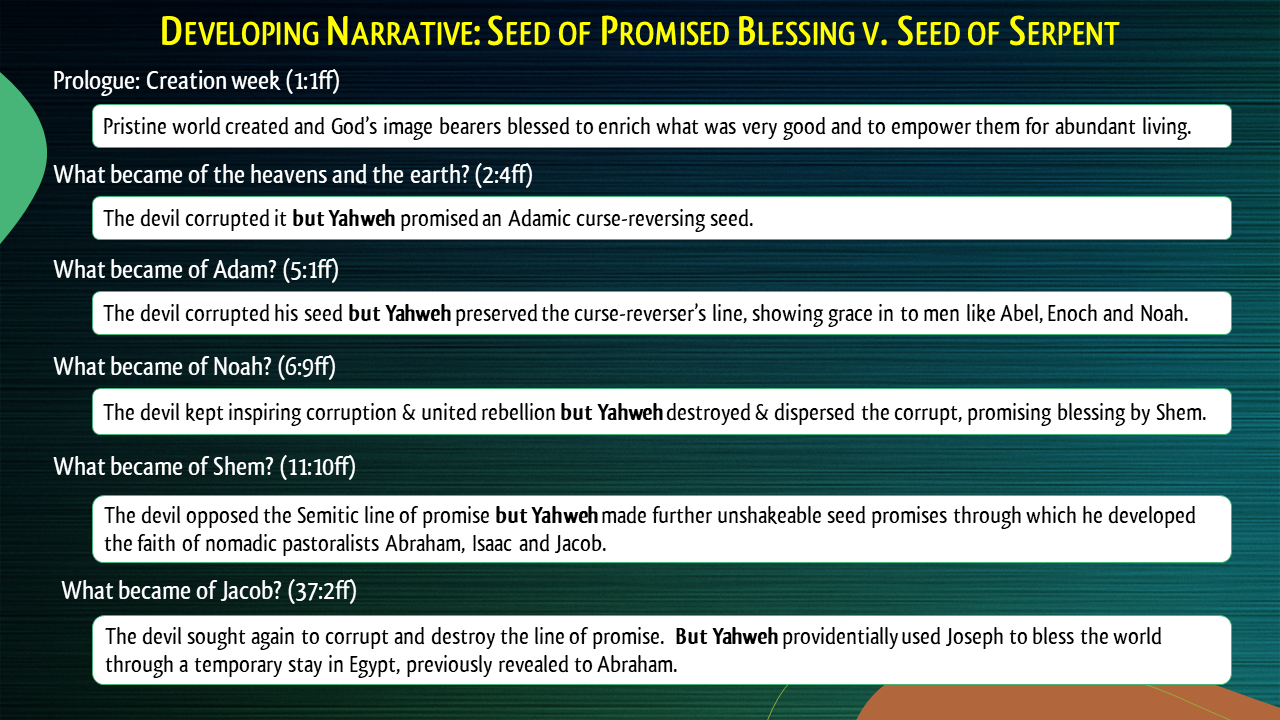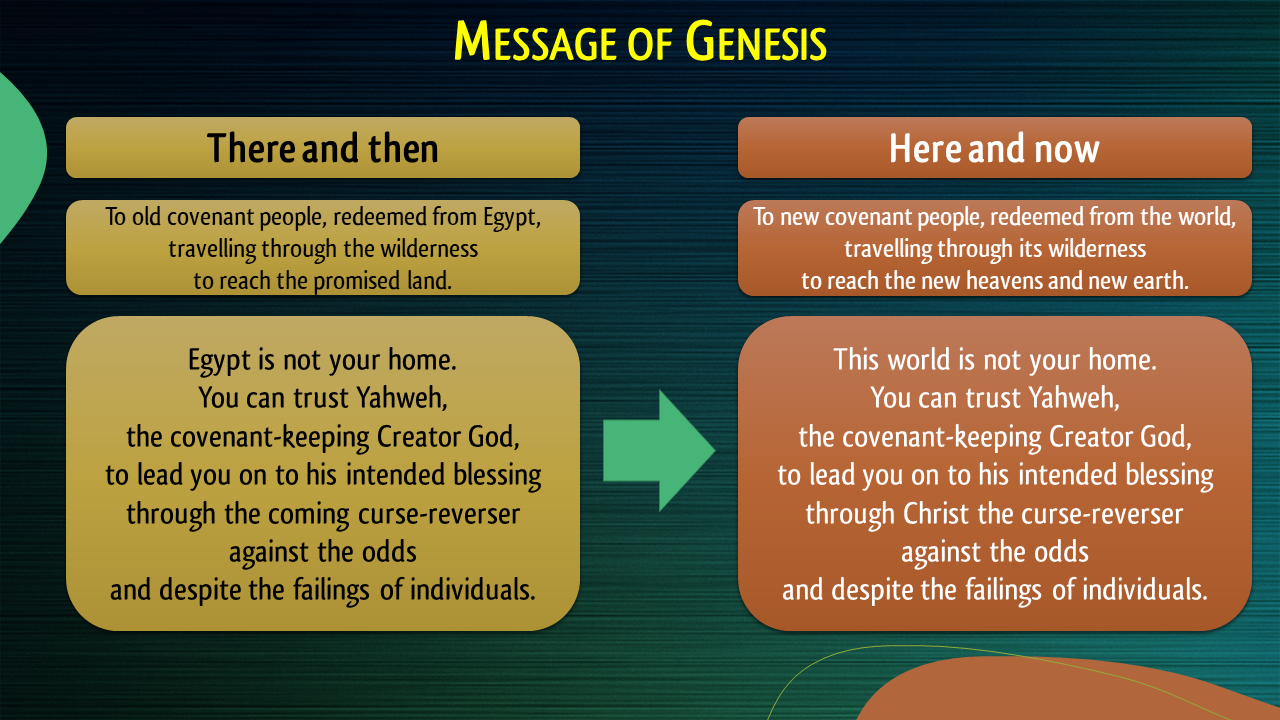Genesis overview
God's promise to and through Abraham:
"I will bless you . . . in you all the families of the earth shall be blessed." (Gen 12:2-3)

The structure of Genesis
After a prologue describing the creation of the heavens and earth, there are eleven sections beginning with a form of “these are the generations of . . .”
Each of these sections points forward and can be translated: “this is what became of . . .” This helps to explain why there is a second account of creation from 2:4. It also makes sense of why the “Jacob” section comes after the major events of his life (ch 29-36) but is focussed on Joseph. It explains what became of Jacob’s family – how they ended up in Egypt.
Some of the these sections start with an “and” – not consistently translated in any major English version. This helps to identify five major sections and six linked sections. This is seen in the summary diagram; a technical explanation is found here.
The narrative of Genesis
To gain a better understanding of Scripture, we seek to grasp how the whole of a book relates to its parts and the parts to the whole.
Genesis has major teaching on a host of areas, especially in chapters 1-3. However, perhaps the most consistent theme is the unfolding story of the struggle between the woman’s seed and the devil’s seed.


The message of Genesis
Genesis has always been known as the first of the five books of Moses. No author is identified in the text, however Luke 24:27 strongly implies that Christ took Moses to be the author. He certainly had the educational qualifications and could have drawn on earlier records, most likely oral ones.
Genesis therefore would first have been read out to Israelites in the wilderness, either shortly after leaving Egypt or when preparing to enter the promised land. This makes sense of the fact 14 chapters are dedicated to Joseph, explaining how the Hebrew people ended up in Egypt.
